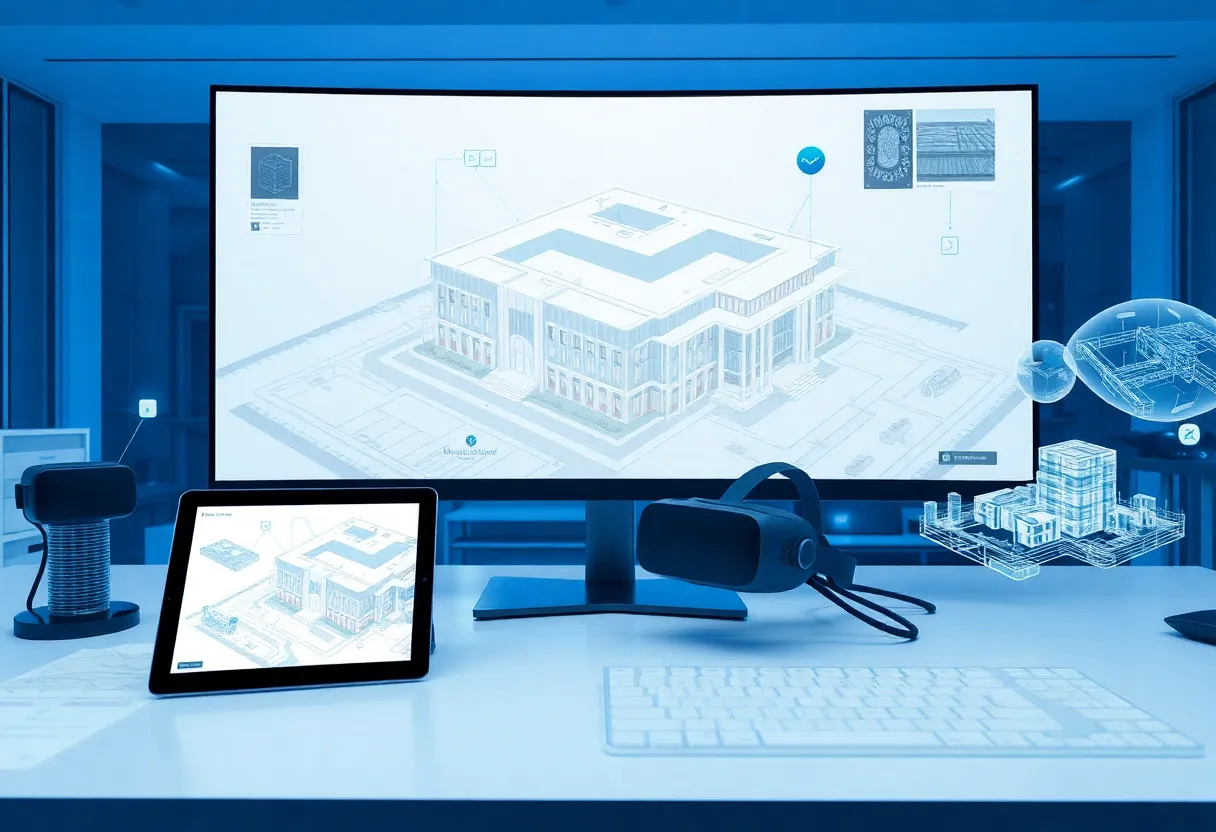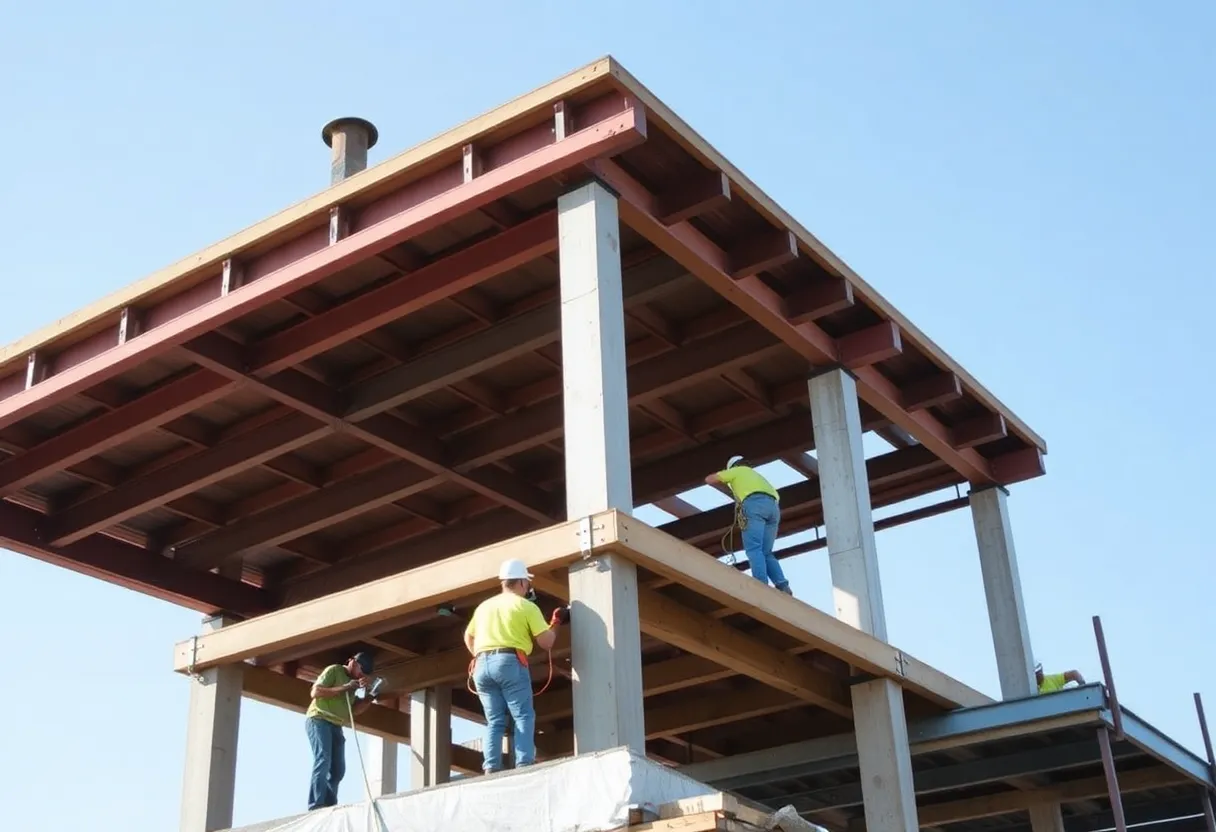Global, August 13, 2025
News Summary
Revizto has rolled out a Unity-built, cross-platform BIM collaboration layer designed to federate very large models and centralize coordination and issue management. The cloud-enabled platform fuses 2D drawings into 3D model views so markups remain spatially linked, supports real-time clash detection and issue tracking, and handles point clouds and lightweight mesh workflows. Native desktop and mobile apps plus a web-based issue tracker enable offline and browser access. Optimization reduces polygon and texture weight to keep giga-models interactive, while plugins and imports preserve interoperability with common AEC authoring tools.
Revizto brings a Unity-built, cross-platform BIM collaboration layer that can federate massive models
A cloud-enabled application designed for building information modeling coordination and issue management is being used across large construction and infrastructure programs. The platform, built on the Unity game engine, aims to let teams view and work with drawings and models together in one place while handling very large datasets from many authoring tools.
Key takeaway
The core offering is a cloud-based BIM coordination, collaboration, and issue manager that fuses 2D drawings into 3D model views, supports real-time coordination and clash detection, and can federate what the company calls giga-models for major projects. Native desktop and mobile apps are available, and a web issue tracker works in any modern browser.
What the platform does first
At its center is a viewer that links 2D and 3D so markups and stamps sit in model space and stay positioned across section, plan and 3D views. Users can create issues, attach metadata like tags and assignees, and route work into reports and dashboards. The issue manager and search engine let teams find and filter issues and generate printable PDFs and scheduled outputs.
How it’s built and why
The application runs on a customized layer of Unity technology but uses only a small portion of the engine. Engineering teams have added roughly seven million lines of code on top of that base. That approach delivers a cross-platform runtime so the same project can be used on Mac, Windows, iOS and Android devices and in web browsers. Desktop and tablet apps keep core workflows available offline and in the field, while the web issue tracker offers browser access across Mac, Windows and Linux.
Scale and data handling
The platform is built to accept large federated models from many CAD kernels and authoring tools. The company reports having consumed more than 280 terabytes of project data and says its optimization techniques reduce polygon counts and texture weight to keep big models interactive. Point cloud handling is part of the recent updates, with options to use mesh formats such as OBJ to shrink storage size and retain coordinates for accurate alignment. Converting raw point cloud files into lighter mesh formats requires third-party tools.
Interoperability and authoring links
The product is open in orientation and supports direct imports and plugins for a wide range of authoring platforms. It connects to widely used modeling and CAD formats as well as mesh and OBJ file inputs. The goal is not to replace authoring tools but to act as a federated coordination layer that can accept models from many sources and preserve location and model intelligence for downstream collaboration.
Feature highlights
- 2D/3D fusion: drawings are spatially aligned with models so markups hover in 3D and remain linked to 2D sheets.
- Real-time coordination: clash detection, issue tracking and assignment across teams and devices.
- QR code support: site codes sync to issues and model locations for field checks.
- Point cloud and mesh integration: recent point cloud support plus lightweight mesh workflows to reduce file size.
- VR and planned AR: virtual reality support is available now; augmented reality for tablets is on the roadmap.
Market position and pricing approach
The vendor frames the product as a collaboration and coordination tool, not an authoring package or a Common Data Environment. It offers different licensing models: project-based or unlimited user licenses for general contractors and large owners, and model-based or discounted packages for architects and engineers. Field staff and non-technical users are a key audience, so the interface is kept simple to promote wide adoption.
Adoption, geography and users
Reported user distribution spans the Americas, Europe & Middle East, and APAC. Roughly six in ten core customers are general contractors, with the remainder a mix of owners, engineers, architects, facility managers and specialists. The platform is used on large infrastructure projects, airport facility management tasks, and multi-disciplinary building programs.
Origins and direction
The founder and chief executive started the venture after working on 3D mapping and gaming technology. The company says gaming-style navigation and lightweight rendering make large model review intuitive for a broad range of users. Management emphasizes openness and cross-platform delivery as central to global adoption and stresses that standards and interoperability still need work in many markets.
Limits and technical notes
The platform is designed for coordination rather than deep model checking or model authoring. Some heavy transformations, such as converting raw point clouds into lighter mesh files, require external tools. The product also depends on integrations to consume data from other vendors’ authoring tools.
Development and community
Product teams gather feedback via user groups and messaging channels to shape the roadmap. Roadmap items include enhanced AR workflows for tablets and continued work to optimize model size and interactivity for field teams.
FAQ
Is this a cloud-only product?
No. Core functionality is available in native desktop and mobile apps while a web-based issue tracker offers browser access. The product is cloud-enabled but not cloud-first.
Can it handle very large models?
Yes. The system uses polygon and texture optimization to handle large federated models and reports handling hundreds of terabytes of project data in aggregate.
Does it replace BIM authoring tools?
No. It is positioned as a coordination and collaboration layer that federates models from many authoring platforms rather than a tool for creating models.
Does it support point clouds and meshes?
Point cloud support has been added. Mesh formats like OBJ can make storage much smaller and retain coordinates for alignment, though conversion from raw scans may require external tools.
What devices are supported?
Native apps run on Mac and Windows desktops and on iOS and Android devices. A web issue tracker runs in modern browsers across operating systems. VR headsets are supported and AR on tablets is planned.
Key features at a glance
| Feature | What it does |
|---|---|
| 2D/3D fusion | Aligns 2D drawings with 3D models so markups remain spatially consistent across views. |
| Issue manager | Tracks issues, assignments, tags, and produces reports and dashboards across projects. |
| Cross-platform delivery | Runs on Mac, Windows, iOS, Android, web browsers, and supports VR; AR for tablets is planned. |
| Large model handling | Optimization techniques reduce polygon and texture load to keep big federated models interactive. |
| Interoperability | Plugins and imports accept models and data from many common AEC authoring platforms and mesh files. |
Deeper Dive: News & Info About This Topic
Additional Resources
- Architosh: Inside Revizto — Global dominance with open BIM coordination
- Wikipedia: Building information modeling
- GeoWeek: Revizto — a look into the future of 2D/3D data fusion and collaboration
- Google Search: Revizto 2D 3D data fusion collaboration
- BBC News: Business coverage (related resource)
- Encyclopedia Britannica: Unity (game engine)
- BBC Somali: Aqoon-Guud (related coverage)
- Google News: Revizto
- Revizto (official site)
- Google Scholar: building information modeling clash detection
Author: Construction FL News
The FLORIDA STAFF WRITER represents the experienced team at constructionflnews.com, your go-to source for actionable local news and information in Florida and beyond. Specializing in "news you can use," we cover essential topics like product reviews for personal and business needs, local business directories, politics, real estate trends, neighborhood insights, and state news affecting the area—with deep expertise drawn from years of dedicated reporting and strong community input, including local press releases and business updates. We deliver top reporting on high-value events such as the Florida Build Expo, major infrastructure projects, and advancements in construction technology showcases. Our coverage extends to key organizations like the Associated Builders and Contractors of Florida and the Florida Home Builders Association, plus leading businesses in construction and legal services that power the local economy such as CMiC Global and Shutts & Bowen LLP. As part of the broader network, including constructioncanews.com, constructionnynews.com, and constructiontxnews.com, we provide comprehensive, credible insights into the dynamic construction landscape across multiple states.





